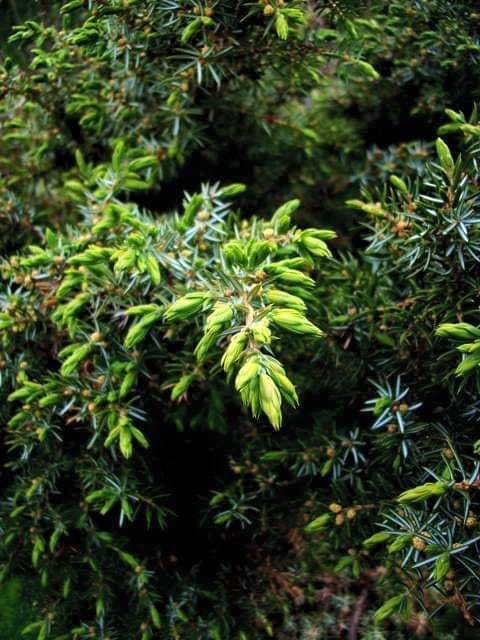(stewardship)
Juniper:
A powerful medicine for body and spirit
November 17, 2019 - By Don Elzer
With this story, Juniper has come into your life so that you can become aware of this plant spirit medicine – it may be important for your life right now. Here is a photo I took of a wild Juniper here at the Wildcraft Forest as the trees spring “tips” began to emerge last Spring.
This design and restoration camp series at the Wildcraft Forest School includes Wild Dynamic Permaculture Design Certification. The series focuses on rewilding farms, gardens, communities and interface landscapes and provides participants with a range of learning environments that includes both classroom and project work in the field. Presented within three camps this series also focuses on Wild Habitat Forests, Food Forests and Medicine Forests that includes stewardship methods.
Sanctuary Forest
Wild Dynamic Stewardship and Regeneration Certification
CREATING A WILD
Published by the Wildcraft Forest School Contact Us
The Forest Almanac seeks to educate, advocate and explore the regenerative forest through sentience, stewardship, science, spirit and sanctuary. As a production from the Wildcraft Forest School Extension Program we endeavor to bring a greater understanding of natural systems and the tools required so that we may better rewild planet Earth. This e-magazine helps people explore environmental problems from a practical, how-to standpoint. We explore the forest, natural systems and responsible travel, innovation, renewable energy, recycling, organic agricultural practices, whole food and wellness. We also tackle tough issues from a neighborhood and village perspective like education, affordable housing and innovation within the localization movement.
Juniper is otherworldly and demonstrates the power of this “being” as a plant spirit. Juniper has the largest geographical range of any woody plant, with a circumpolar distribution throughout the cool temperate Northern Hemisphere from the Arctic south in mountains to around 30°N latitude in North America, Europe and Asia and thus in wildcrafting we call this plant “a companion of the Elvish Ring”.
“Juniperus communis”, or the “Common Juniper”, is a species of conifer in the genus Juniperus, in the family Cupressaceae. The spirit meaning of Juniper is “the great journey”. It is a gatekeeper species within the savannah and thus serves as part of the “rite of passage” within that habitat. The twists and turns of the trunk and branches tell us about staying true to oneself and to remain with ones integrity.
Early Celtic people considered it a sacred tree; its berries were used with thyme in Druid and Grove incenses for visions. Juniper grown by the door discourages thieves. The mature berries can be strung and hung in the house to attract love.
Juniper is associated with protection in many different indigenous nations. The Interior Salish and Northwest Coast tribes used juniper to banish evil spirits and protect themselves from witchcraft. Among the southwestern Pueblos, the tree was believed to counteract 'ghost sickness,' a malady which afflicted bereaved relatives or people who handle the bodies of the dead. Plains nations, such as the Dakota, Cheyenne, and Pawnee, often hung juniper boughs on their tepees or burned them in the campfire to keep their homes safe from storms. And in many tribes, especially hunters, would carry a sprig of juniper as a protective charm or rub juniper branches on their bodies before embarking on a dangerous journey to protect themselves from grizzly bears, monsters, or general bad luck. Juniper is one of the herbs frequently included in medicine bundles and amulets. Juniper berries were also eaten by people in some Southwestern and Southern California nations, and Juniper leaves were frequently used as medicinal herbs.
Juniper has been used to treat the body’s filters like kidneys, however too much can do damage to these filters. The medicinal values are expansive for this plant as are the culinary uses. Its astringent blue-black seed cones, commonly known as "juniper berries", are very bitter to eat raw and are usually sold dried and used to flavour meats, sauces, and stuffings. They are generally crushed before use to release their flavour. Since juniper berries have a strong taste, they should be used sparingly. They are generally used to enhance meat with a strong flavour, such as game, including game birds, or tongue.
The cones are used to flavour certain beers and gin (the word "gin" derives from an Old French word meaning "juniper"). In Finland, juniper is used as a key ingredient in making sahti, a traditional Finnish ale. Also the Slovak alcoholic beverage Borovička and Dutch Genever are flavoured with juniper berry or its extract.
Juniper is used in the traditional farmhouse ales of Norway, Sweden, Finland, Estonia, and Latvia. In Norway, the beer is brewed with juniper infusion instead of water, while in the other countries the juniper twigs are mainly used in the mash, as filters to prevent the crushed malts from clogging the outlet of the mashing tub.
At the Wildcraft Forest, Juniper has become an important ingredient in our wildcrafted teas.
Learn about what we do…
Join us at the Wildcraft Forest School...
Yasei Shinrin Yoku Teachers Training provides participants
with certification to perform Wild Forest Bathing.
Shinrin Yoku
Yasei
Yasei Shinrin Yoku Teachers Training provides participants
with certification to perform Wild Forest Bathing.
Shinrin Yoku
Yasei

